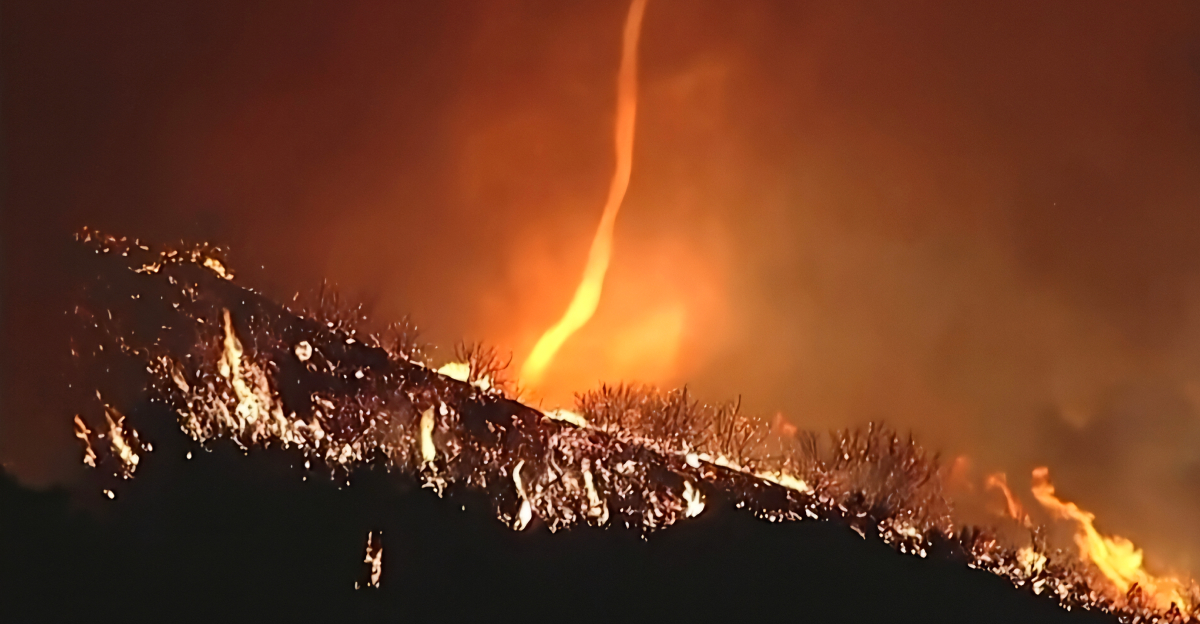
In August 2025, Hawaiʻi Volcanoes National Park became the stage for a dazzling and historic eruption. According to the National Park Service, Lava fountains shot more than 500 feet into the air. At the same time, cameras captured a tornado-like vortex – a rare “volnado” – whirling ash and debris across Halemaʻumaʻu Crater.
The U.S. Geological Survey’s Hawaiian Volcano Observatory (HVO) confirmed this was Kīlauea’s 31st eruption since December 2024. More strikingly, HVO scientists said it was the first time a volcano was documented since 1983, making it a 42-year rarity.
Sudden Eruption, Towering Fountains
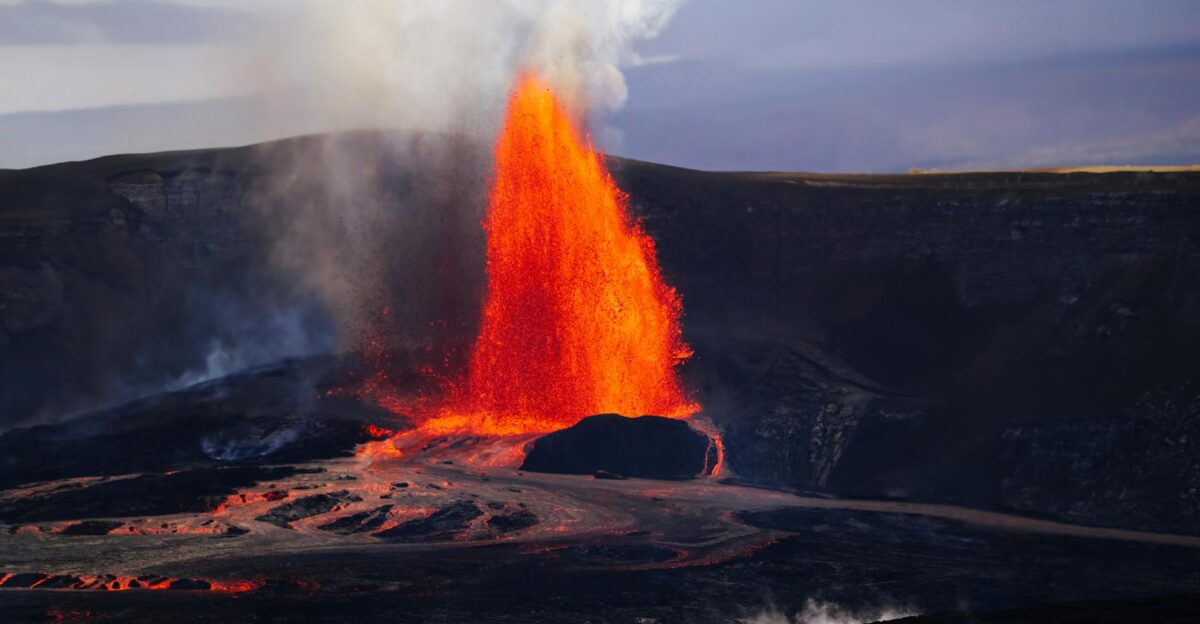
With little warning, the eruption began on August 22, quickly intensifying into a spectacular display. By midday, fountains of molten lava soared higher than a 40-story building. The USGS reported that all activity was confined to the summit crater, allowing visitors to observe safely from designated areas.
Brilliant plumes lit the sky, echoing past eruptions while highlighting Kīlauea’s reputation as one of the world’s most restless volcanoes. “It’s breathtaking, but it’s also a reminder of the risks,” a park spokesperson told Hawaiʻi News Now.
What Exactly Is a Volnado?
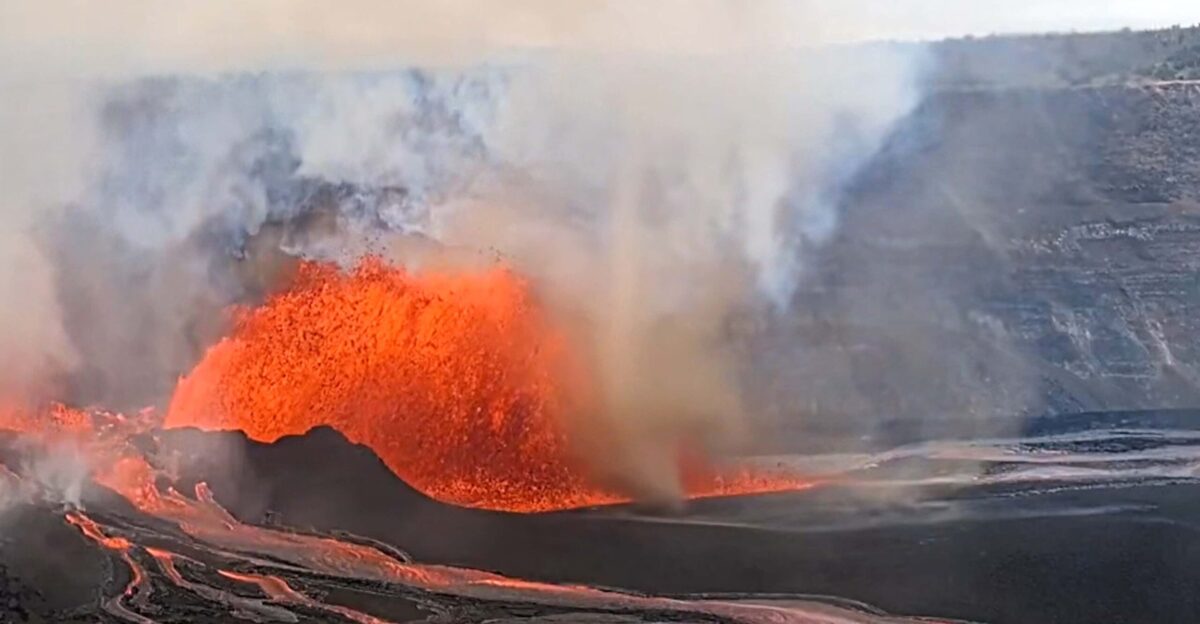
The USGS explained that a volnado—short for volcanic tornado—forms when extreme heat from erupting magma collides with cooler air, producing a rotating vortex. During the August eruption, observers documented several swirling columns that briefly lifted ash and debris across the crater floor.
While whirlwinds occasionally appear near lava fountains, USGS scientists emphasized that volnados are rare and tied to especially vigorous eruptions. For researchers, the event provided a unique teaching moment about turbulent plume dynamics; for visitors, it was both mesmerizing and unnerving.
Eyewitness Awe at the Crater
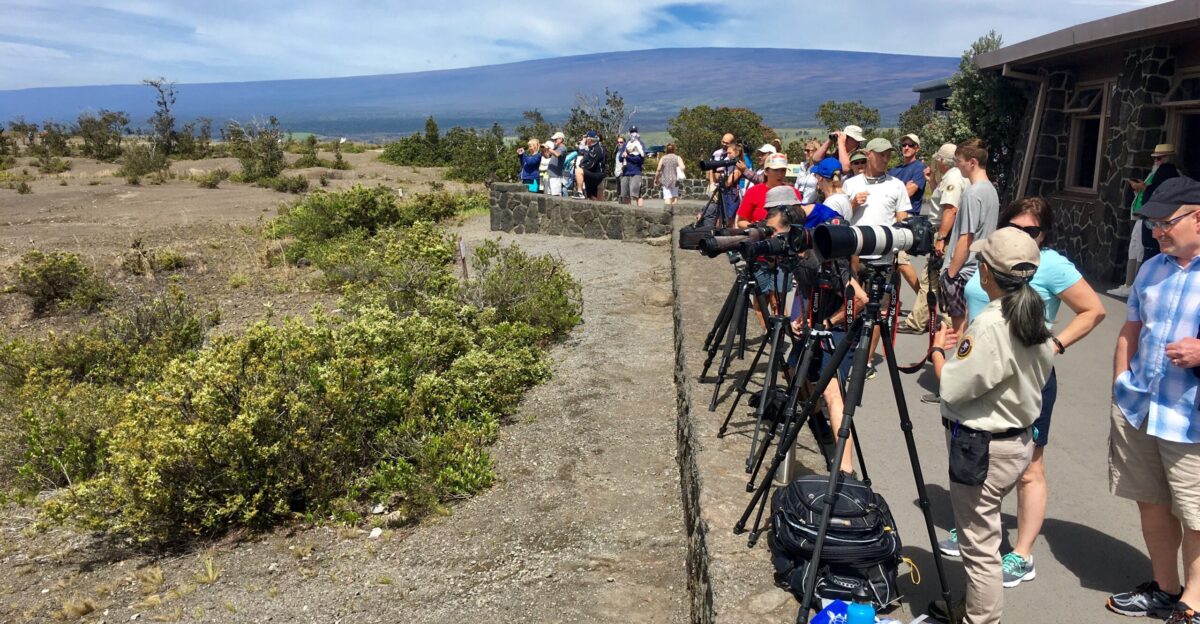
Visitors described the eruption as surreal. Park volunteer and photographer Janice Wei told the National Park Service it felt “like sitting in the front row at nature’s most extraordinary show.” The roar of fountains resembled jet engines, while waves of heat radiated across viewing points a mile away.
Families gathered with children to witness history, while scientists and photographers set up instruments along the crater rim. The eruption became both a community experience and an open-air laboratory, uniting residents and researchers in awe of Kīlauea’s force.
Kīlauea’s Hyperactive Year
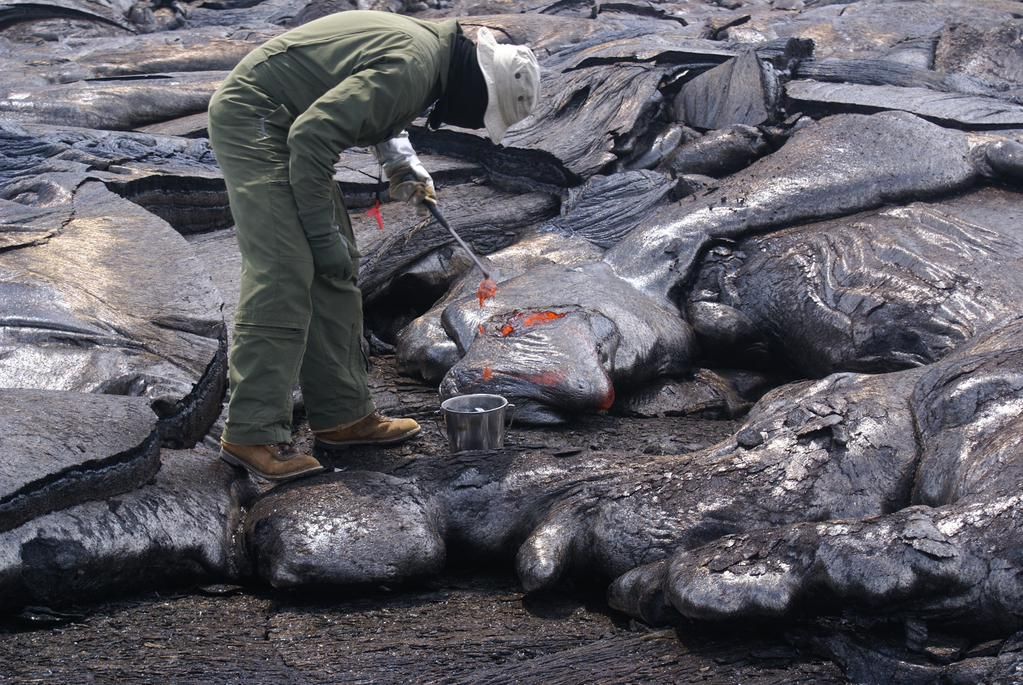
According to the USGS Hawaiian Volcano Observatory, Kīlauea has produced more than 30 eruptive episodes since December 2024, cementing its status as one of the world’s most active volcanoes. The August 2025 eruption stood out for its sustained lava fountains and the rare volnado.
HVO scientists said this year’s sequence of eruptions has provided an unprecedented opportunity to study magma pathways, gas emissions, and seismic shifts. They emphasized that every new event contributes to the global understanding of volcanic hazards and forecasting challenges.
How Lava Fountains Explode Skyward
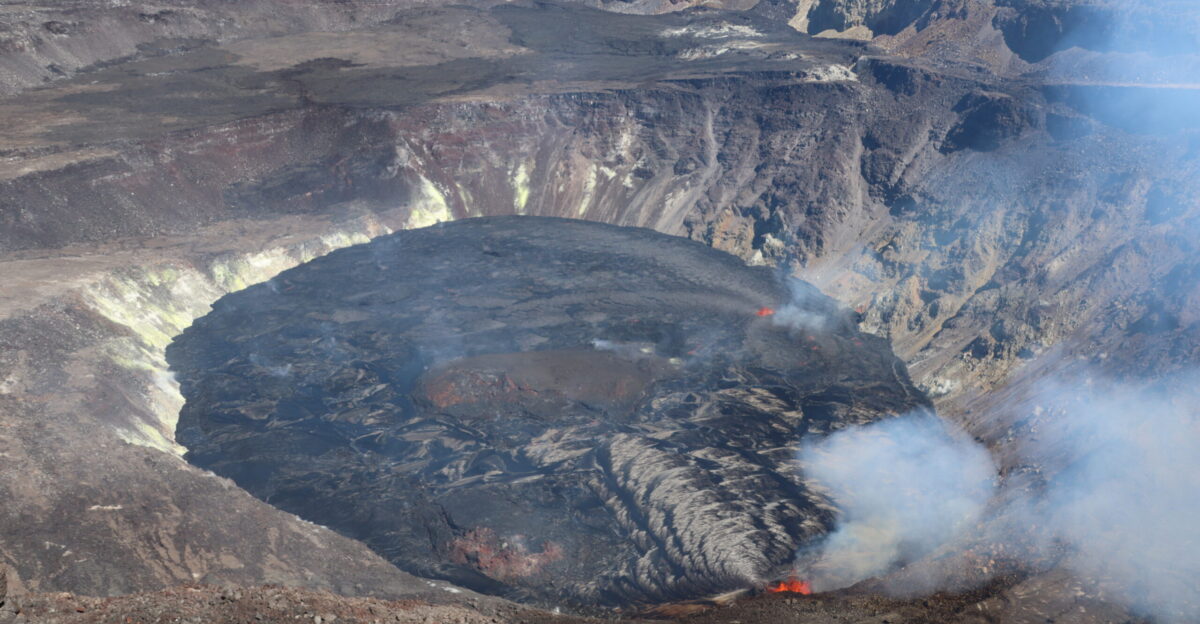
USGS volcanologist Ken Hon explained that lava fountains occur when gases trapped in rising magma expand, blasting molten rock through vents at the surface. Beneath Halemaʻumaʻu Crater, chambers build pressure until the crust fractures, releasing fiery jets of lava.
Hon noted that vent geometry and gas content help determine how high and wide the fountains rise. During the August eruption, some fountains exceeded 500 feet and lasted for hours, an extraordinary display that thrilled visitors and challenged existing volcanic models.
Pele’s Living Presence
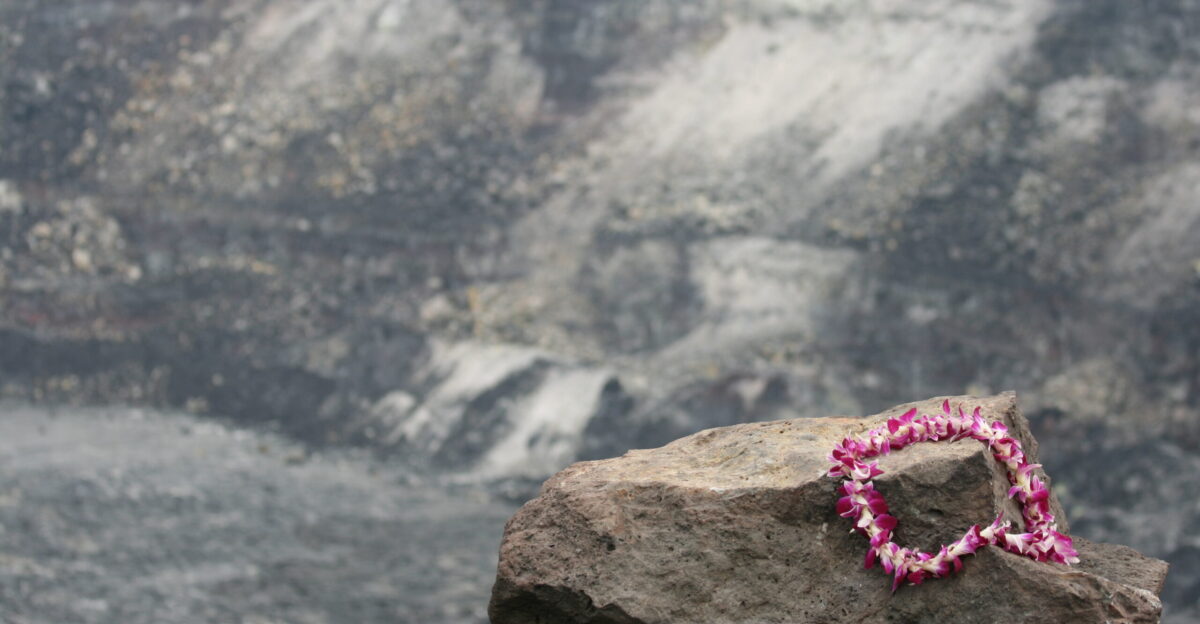
For Native Hawaiians, Kīlauea is sacred ground and the home of Pele, the goddess of fire. Eruptions are seen not just as destruction, but as acts of creation that continue shaping the islands.
Huihui Kanahele-Mossman of the Edith Kanakaʻole Foundation told Hawaiʻi Public Radio that every eruption carries cultural meaning: “This is our land being reshaped, the continuation of Pele’s presence.”
Many locals gathered to chant and pray during the August eruption, blending cultural tradition with scientific observation on the crater’s edge.
Streaming Fire to the World
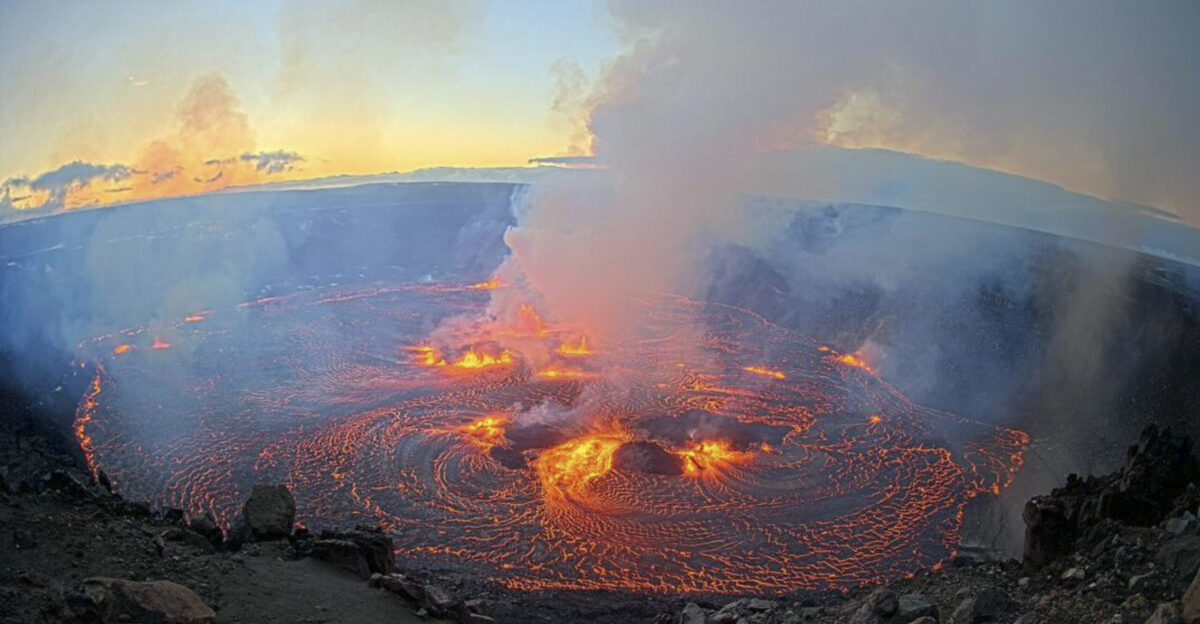
The USGS streamed the eruption live through high-definition cameras stationed around the summit. Seismic sensors and GPS instruments tracked ground deformation as lava surged upward. According to the National Park Service, these feeds were viewed worldwide, transforming a remote volcanic event into a global spectacle.
The real-time data was invaluable for scientists, and the livestream provided a connection to home for many Hawaiians living abroad. The cutting-edge monitoring and cultural resonance mix reflected Kīlauea’s dual role as a research hub and a spiritual landscape.
Why Scientists Can’t Predict It All
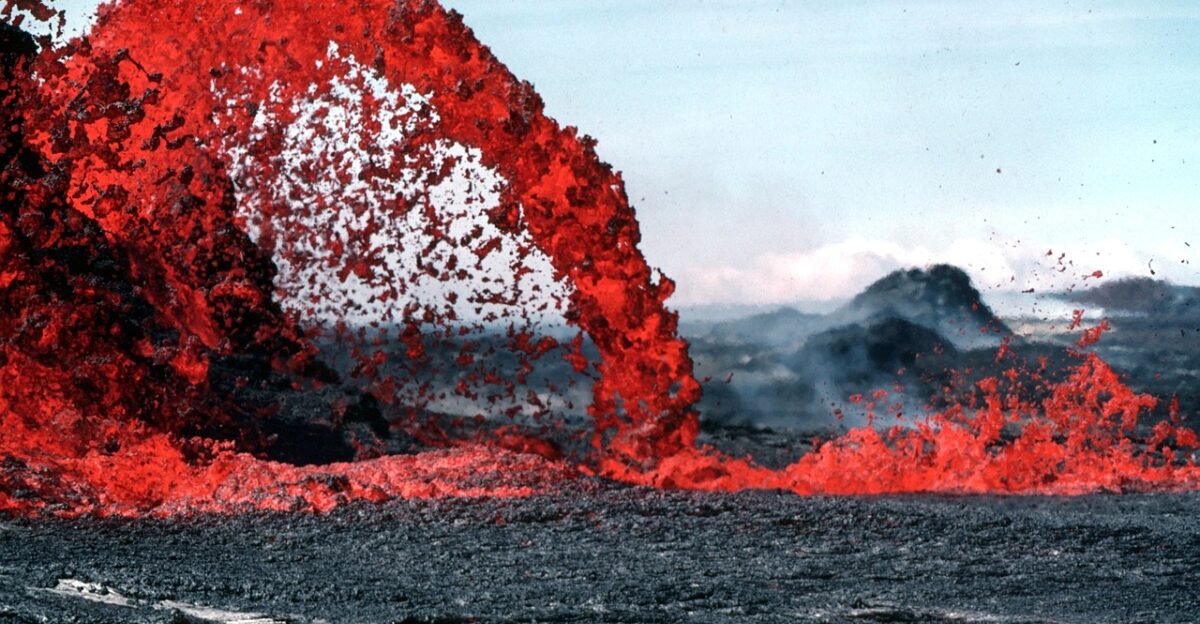
Despite decades of study, USGS experts say eruptions at Kīlauea remain notoriously difficult to predict. Events can begin suddenly, intensify within hours, and end just as quickly. Given its frequency and variability, the Hawaiian Volcano Observatory described Kīlauea as a “natural laboratory” for studying magma behavior.
The volnado vividly reminded scientists of the limits of forecasting, emerging from complex, shifting conditions that they are still trying to model. Researchers stressed that while monitoring tools improve safety, the volcano ultimately “writes its own timeline.”
Hidden Dangers in the Glow
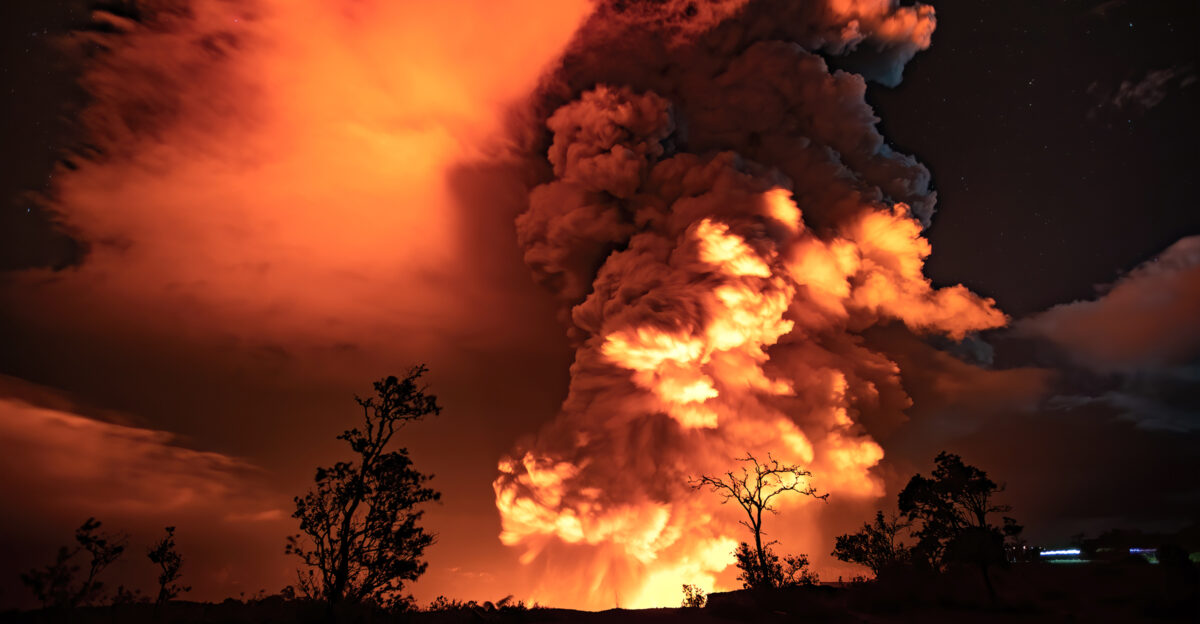
While no homes or park facilities were threatened, hazards were real. The USGS and National Park Service warned of volcanic gases such as sulfur dioxide, which can cause breathing problems, and fine glass fibers known as “Pele’s hair.” Officials also cited unstable terrain near vents.
“It looks inviting, but the eruption environment is unpredictable and dangerous,” a park spokesperson said in an official release. The balance between safe public access and visitor safety was tested as crowds gathered for night viewings of lava fountains.
Tourism Booms on Lava’s Glow
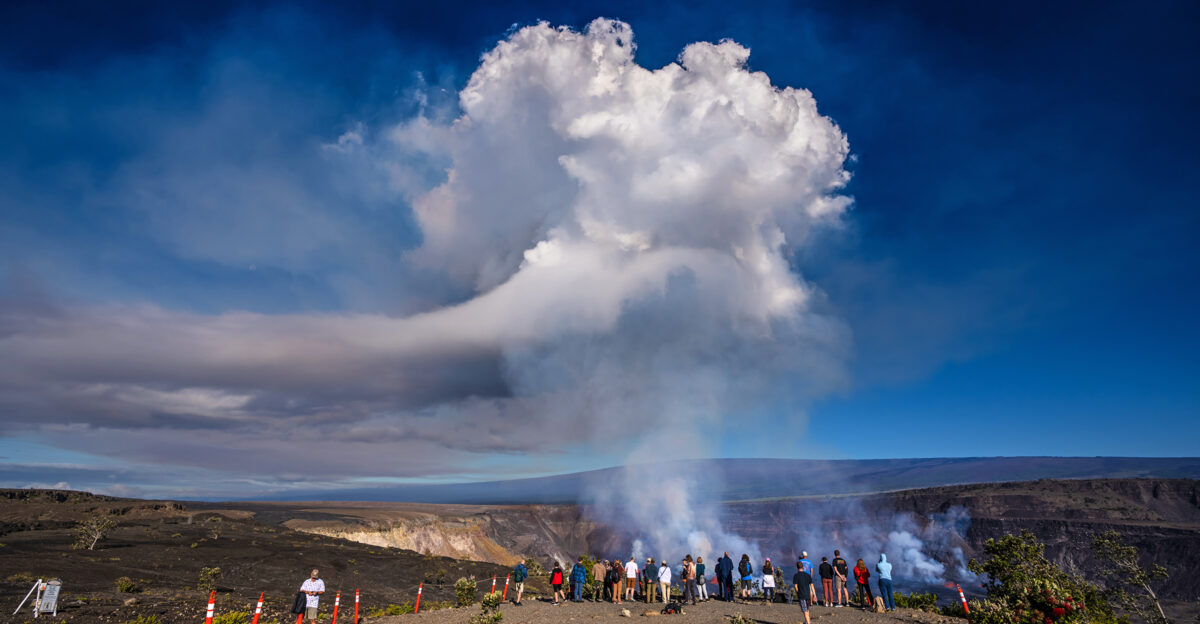
The National Park Service reported a 49% increase in visitor numbers compared with the same month in 2024, driven by international media coverage of the volcano. Demand for local guides, hotels, and restaurants sharply rose. Park managers worked to control overcrowding and protect culturally sensitive areas while accommodating travelers.
For many visitors, the eruption became a once-in-a-lifetime experience, proof of nature’s raw power. Officials stressed that tourism benefits must be balanced with safety measures and respect for sacred landscapes.
Eruption Visible From Space
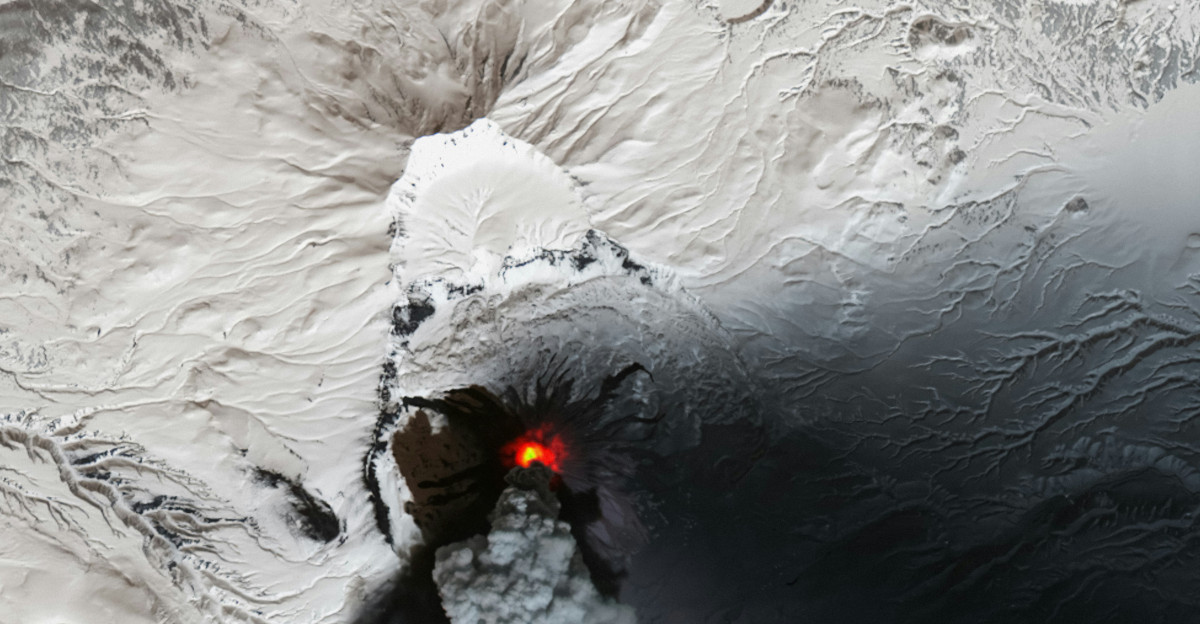
NASA’s Earth Observatory confirmed that lava fountains and ash plumes from the eruption were visible from orbit. Satellites tracked thermal signatures and ash dispersion in real time, giving geologists a unique perspective on the eruption’s scale.
The Earth Observatory noted that combining orbital data with ground-based photography gave scientists a fuller picture of Kīlauea’s activity. Seeing the volcano light up Earth from space highlighted the eruption’s power and global scientific importance.
Nature’s Destruction and Renewal
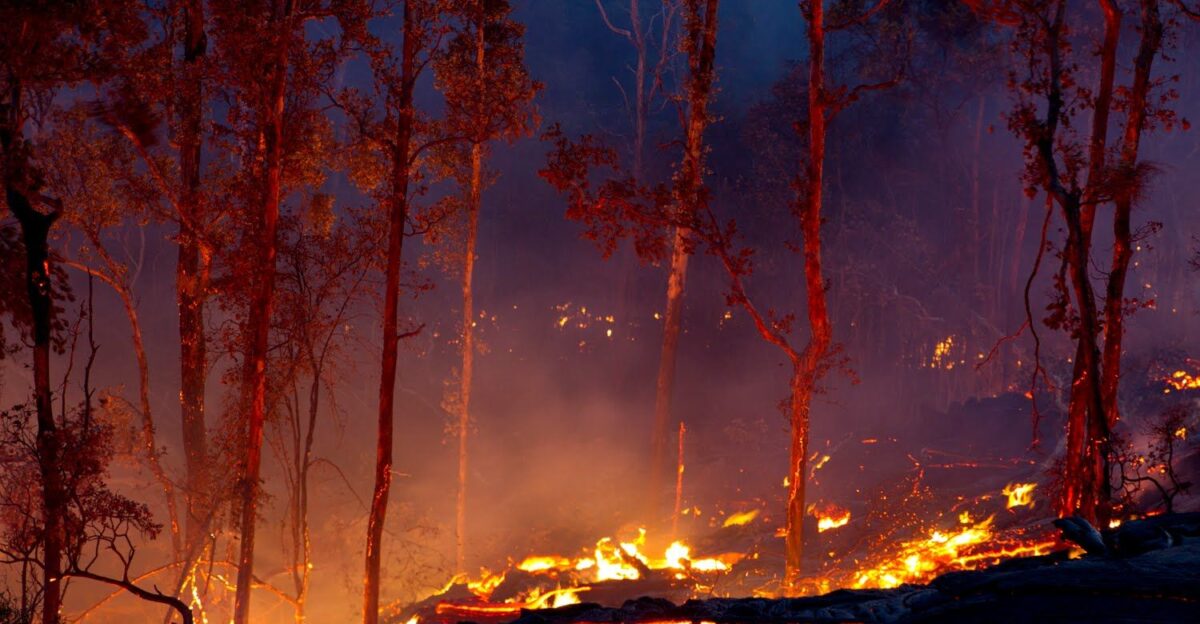
Each eruption reshapes ecosystems. The USGS reported that sulfur dioxide emissions from the August event contributed to acid rain, temporarily harming vegetation downwind. Lava flows smothered forests, but will eventually cool into fertile new terrain.
Ecologists say eruptions are destructive in the short term but essential to island growth in the long run. By adding new layers of land, Kīlauea continues the natural cycle of destruction and renewal that has formed Hawaiʻi over millions of years.
Community Balances Awe and Concern
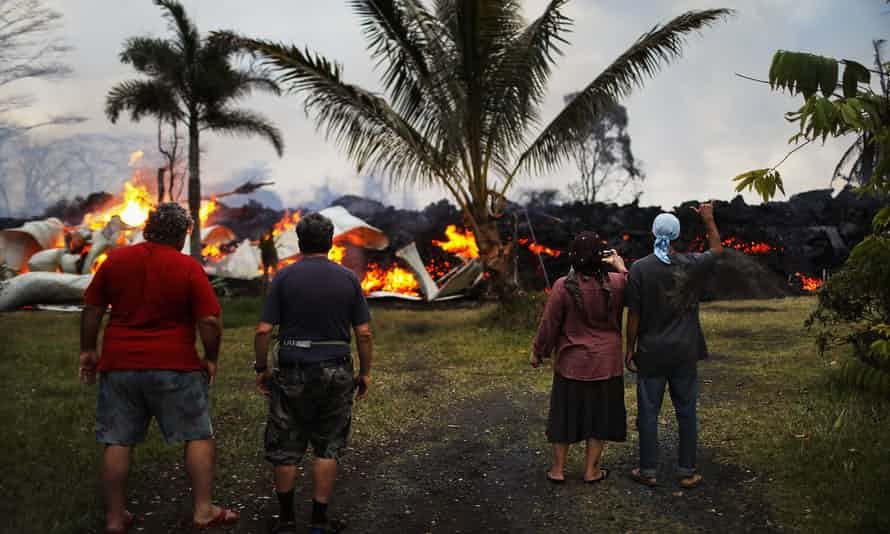
Local communities met the eruption with a mix of reverence and concern. Indigenous leaders acknowledged the cultural importance of witnessing Pele’s power, while some residents voiced worries about repeated gas plumes affecting air quality.
The National Park Service reported community gatherings at safe viewing points, where chants and prayers blended with scientific presentations. For many, the eruption highlighted the need to balance cultural observance, public health, and tourism management in a place where land and people remain deeply intertwined.
Eruption Becomes a Classroom
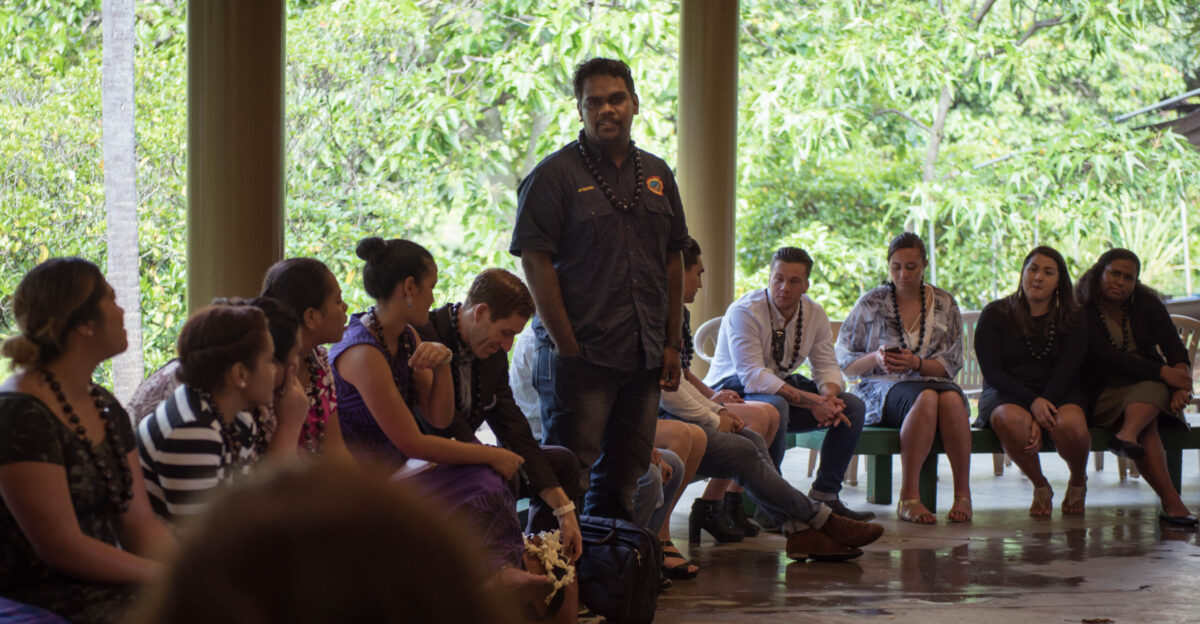
In response to heightened public interest, the park expanded educational programs. Tours and school trips highlighted both volcanic science and Hawaiian traditions. Students viewed recordings of the volcano alongside cultural stories tied to Pele.
The National Park Service said such programs enrich the visitor experience by pairing scientific explanations with indigenous knowledge. Teachers added that moments like these build more profound respect for geology and cultural heritage, making the eruption a spectacle and a powerful teaching tool.
Science Learns From Surprises
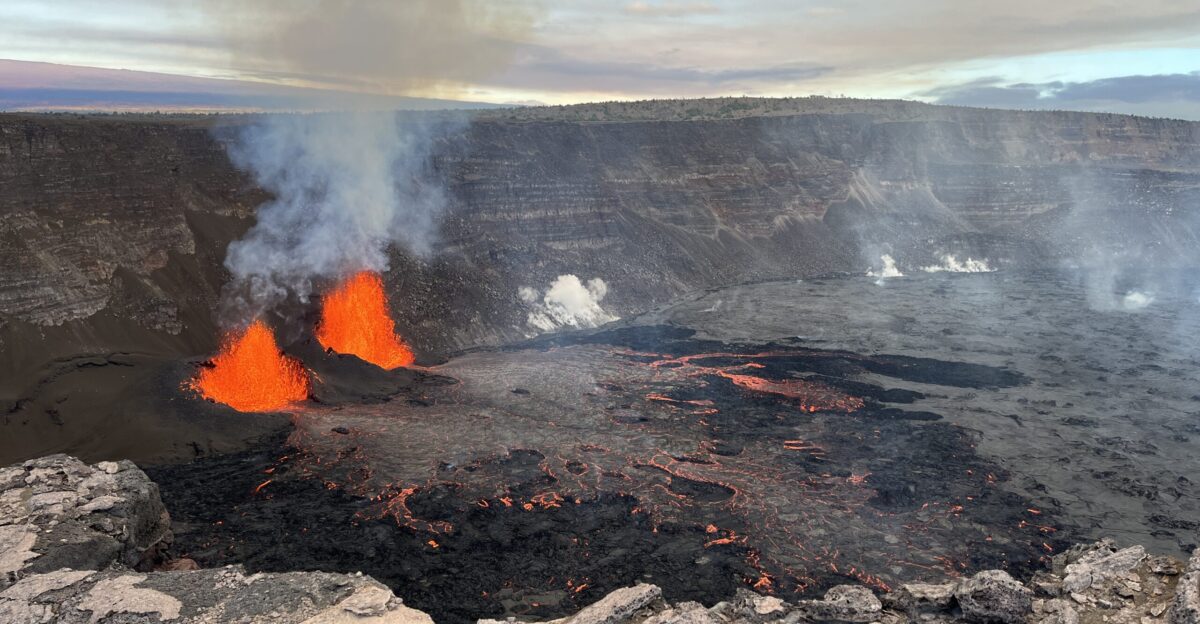
The USGS emphasized that the volcano was among the year’s most significant volcanic discoveries. Unusual events like this help refine models of plume behavior, lava fountain dynamics, and eruption hazards. “Each eruption brings something new,” a USGS scientist said in a public briefing.
The Hawaiian Volcano Observatory stressed that Kīlauea’s recent hyperactivity contributes to global risk assessment and hazard mitigation research. By studying why volcanoes occur only under rare conditions, researchers hope to strengthen both science and safety worldwide.
What the Future Holds
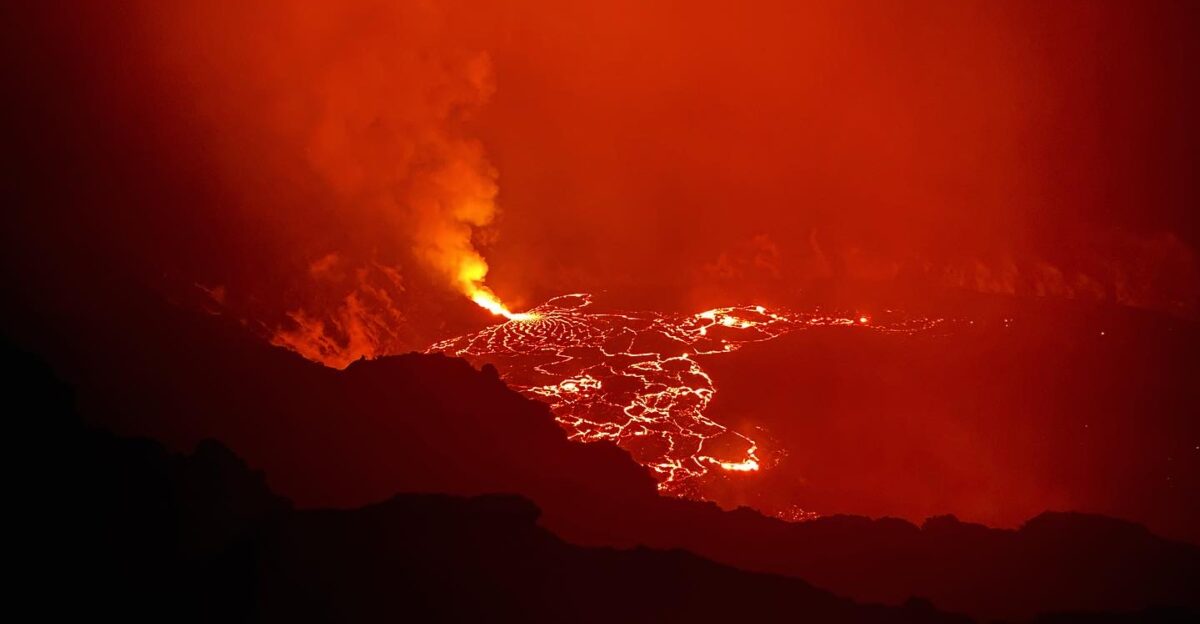
USGS monitoring shows that magma supply, ground deformation, and gas emissions remain active, but the long-term trajectory is unclear. Some patterns resemble the early 1980s, when Kīlauea began a 35-year eruptive era. Others suggest activity may soon quiet down.
“We can’t say with certainty what comes next,” HVO scientists cautioned in an August update. For Hawaiians, that uncertainty is part of daily life on volcanic land, where tomorrow might bring silence, or another night sky lit by fire fountains.
Air Travel Stays Safe
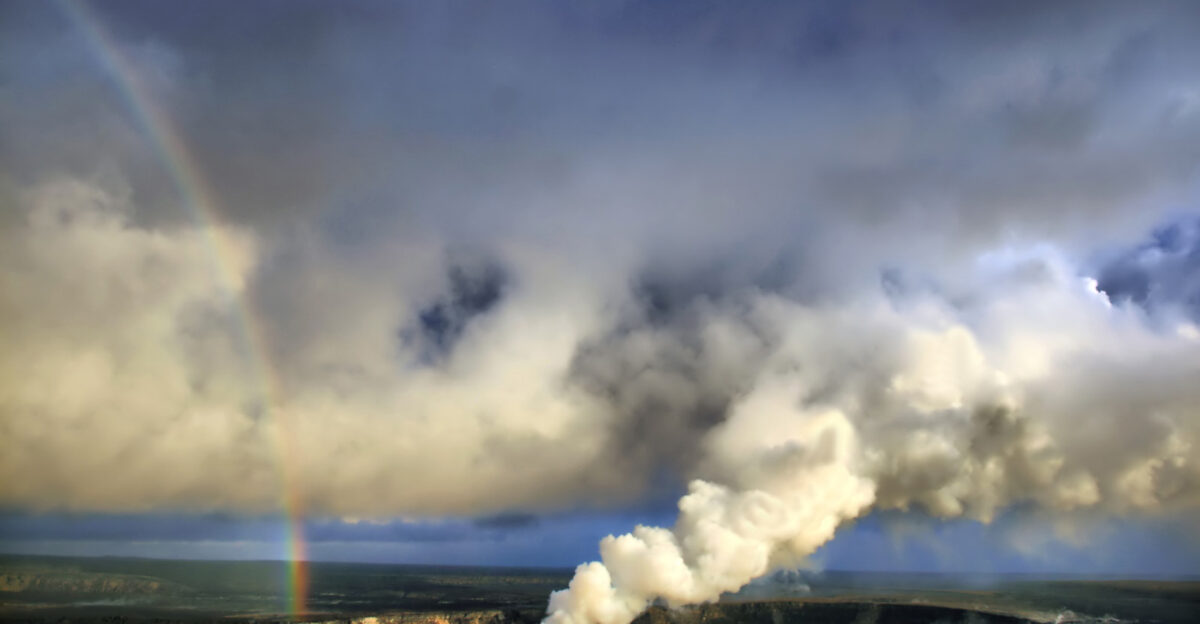
Despite dramatic fountains, aviation disruptions were minimal. The Federal Aviation Administration (FAA) and USGS alerted pilots about possible ash clouds, but prevailing winds confined most particles to the summit area.
The FAA confirmed that no commercial flights were grounded, reflecting safety protocols honed after past volcanic disruptions worldwide. Officials said the August eruption showed how real-time monitoring and interagency coordination now help protect travelers and trade from volcanic risks.
Park Rangers as Guardians
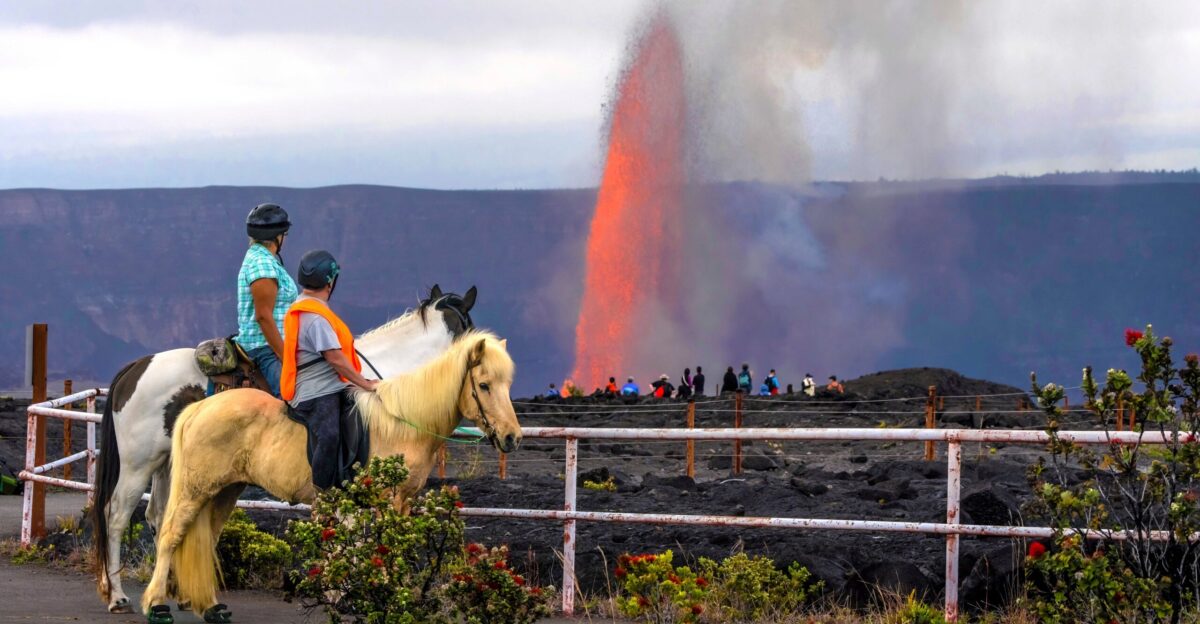
Hawaiʻi Volcanoes National Park oversaw safety and stewardship during the eruption. Rangers enforced viewing limits, safeguarded sacred sites, and facilitated research access. The NPS said its mission is to “keep people safe while honoring the land,” balancing the needs of visitors, scientists, and Native Hawaiian communities.
By integrating cultural narratives into official updates, the park highlighted that eruptions are not just scientific phenomena but living cultural events. The August eruption reinforced the park’s vital role as stage and steward.
The Lasting Legacy of 2025’s Volnado
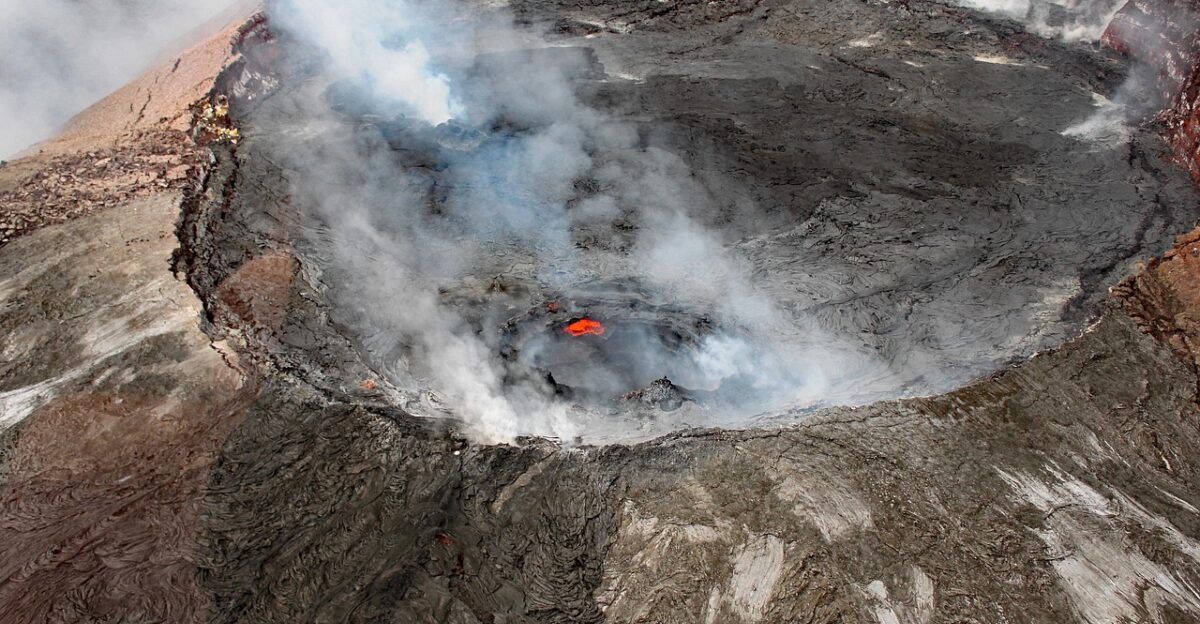
The August eruption etched itself into memory with its towering lava fountains and the first volnado documented at Kīlauea in over four decades. For the USGS, it was a milestone in understanding volcanic processes; for Hawaiians, it was a cultural moment tied to identity and resilience.
Whether it signals a new eruptive cycle or a brief flare of activity, the spectacle demonstrated Kīlauea’s unmatched power to awe, challenge, and inspire. Its legacy will endure where science, spirit, and spectacle converge.